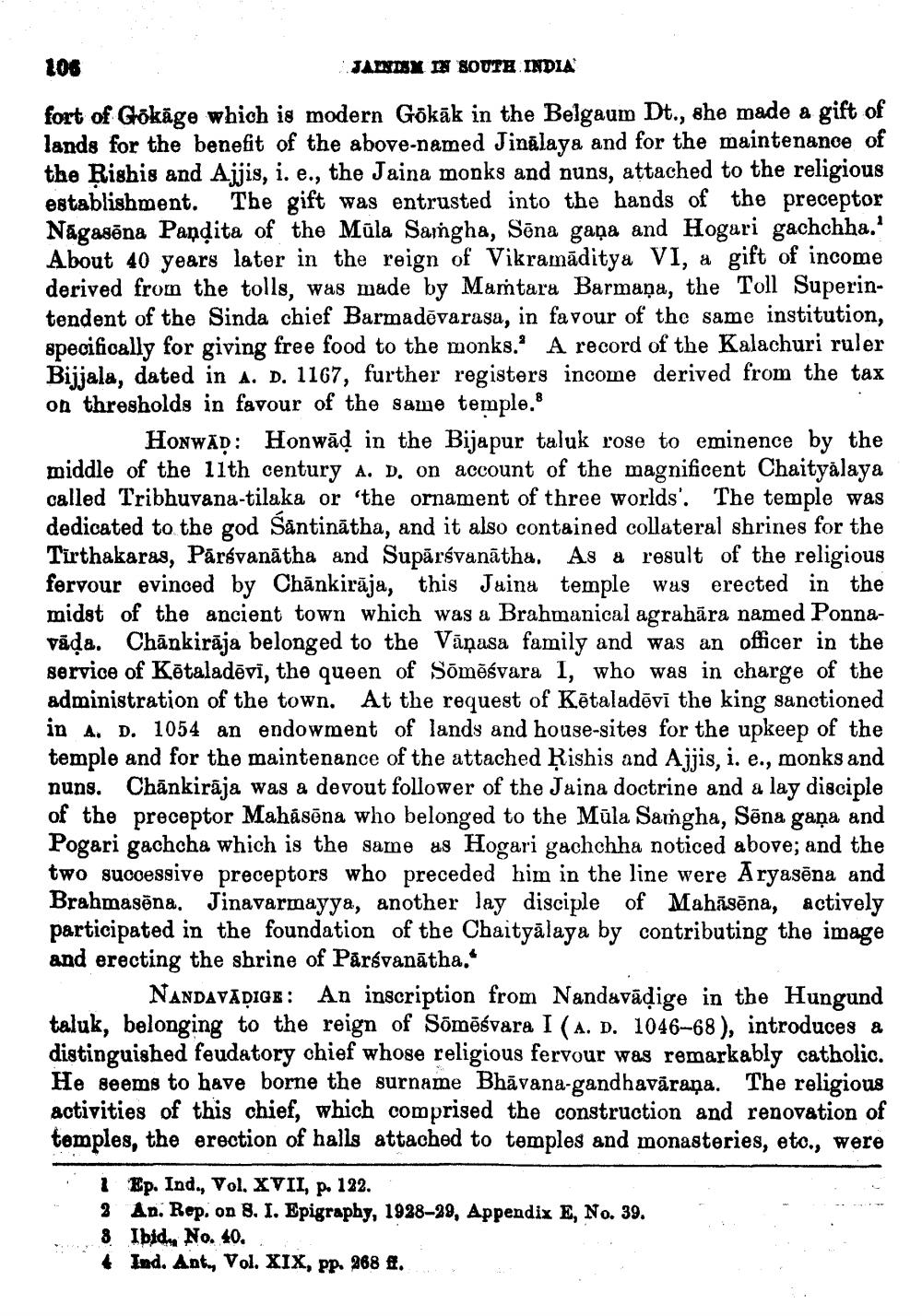________________
106
JANDEX IN SOUTH INDIA
fort of Gökāge which is modern Gökāk in the Belgaum Dt., she made a gift of lands for the benefit of the above-named Jinālaya and for the maintenance of the Rishis and Ajjis, i. e., the Jaina monks and nuns, attached to the religious establishment. The gift was entrusted into the hands of the preceptor Nagasõna Pandita of the Müla Samgha, Sõna gaña and Hogari gachchha. About 40 years later in the reign of Vikramāditya VI, a gift of income derived from the tolls, was made by Mamtara Barmaņa, the Toll Superintendent of the Sinda chief Barmadēvarasa, in favour of the same institution, specifically for giving free food to the monks. A record of the Kalachuri ruler Bijjala. dated in A. D. 1167, further registers income derived from the tax on thresholds in favour of the same temple.
HONWĀD: Honwād in the Bijapur taluk rose to eminence by the middle of the 11th century A. D. on account of the magnificent Chaityalaya called Tribhuvana-tilaka or 'the ornament of three worlds'. The temple was dedicated to the god Šantinātha, and it also contained collateral shrines for the Tirthakaras, Pārsvanātha and Supārsvanātha. As a result of the religious fervour evinced by Chānkirāja, this Juina temple wus erected in the midst of the ancient town which was a Brahmanical agrahāra named Ponnavāda. Chānkirāja belonged to the Vāṇasa family and was an officer in the service of Kötaladēvī, the queen of Somēśvara I, who was in charge of the administration of the town. At the request of Kētaladēvi the king sanctioned in A. D. 1054 an endowment of lands and house-sites for the upkeep of the temple and for the maintenance of the attached ķishis and Ajjis, i. e., monks and nuns. Chānkirāja was a devout follower of the Jaina doctrine and a lay disciple of the preceptor Mahāsēna who belonged to the Mūla Samgha, Sēna gaña and Pogari gachcha which is the same as Hogari gachchha noticed above; and the two sucoessive preceptors who preceded him in the line were Aryasēna and Brahmasõna. Jinavarmayya, another lay disciple of Mahāsēna, actively participated in the foundation of the Chaityālaya by contributing the image and erecting the shrine of Pārsvanātha.
NANDAVĀDIGE: An inscription from Nandavādige in the Hungund taluk, belonging to the reign of Sõmēśvara I (A. D. 1046-68), introduces a distinguished feudatory chief whose religious fervour was remarkably catholic. He seems to have borne the surname Bhāvana-gandhavāraṇa. The religious activities of this chief, which comprised the construction and renovation of temples, the erection of halls attached to temples and monasteries, eto., were
1 Ep. Ind., Vol. XVII, p. 122. 3 An. Rep. on 8. I. Epigraphy, 1928-29, Appendix E, No. 39. 8 Ibid, No. 40. 4 Ind. Ant, Vol. XIX, pp. 268 ff.




